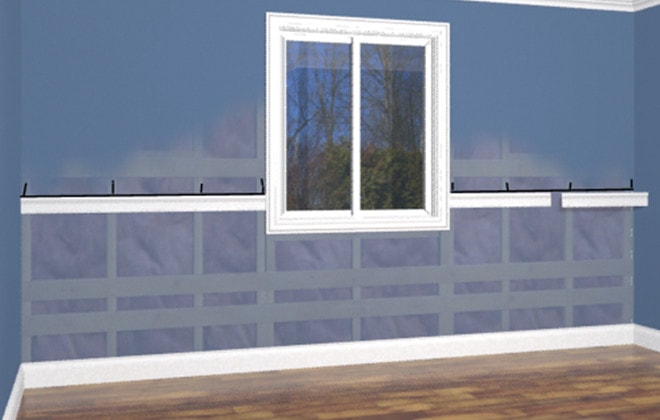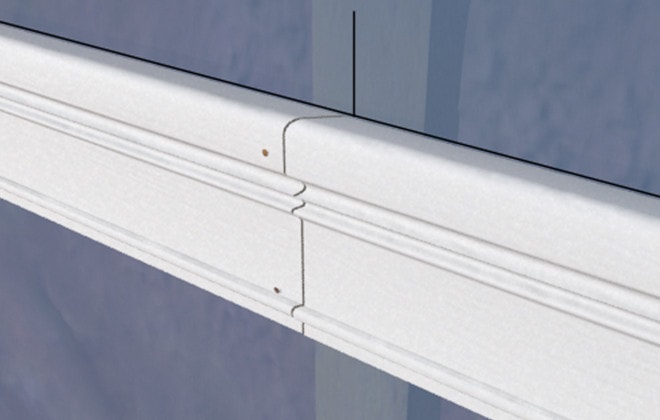Notes on installation
- The walls must be painted before installing the chair rails.
- Chair rails are installed on the wall at a height of between 32" and 36" from the floor.
- Picture rails are usually installed 10" to 16" below the ceiling, depending on the ceiling height.
- Allow the mouldings to acclimatize for 24 to 48 hours in the room where they will be installed.
- Paint the mouldings before installation, and simply touch them up afterwards.
- Mouldings can be fastened with finishing nails or a power nailer. Do not nail too near the edge or the wood may split.
- Use 1 ½" nails.
- Nail every 16" ideally into wall studs.
- Drive in nails with a nail set.
- Conceal driven-in nails with wood filler.
- Hardwood mouldings should be pre-drilled before being nailed to prevent them from splitting. Be sure to choose the correct drill and drill bits for any job.


















